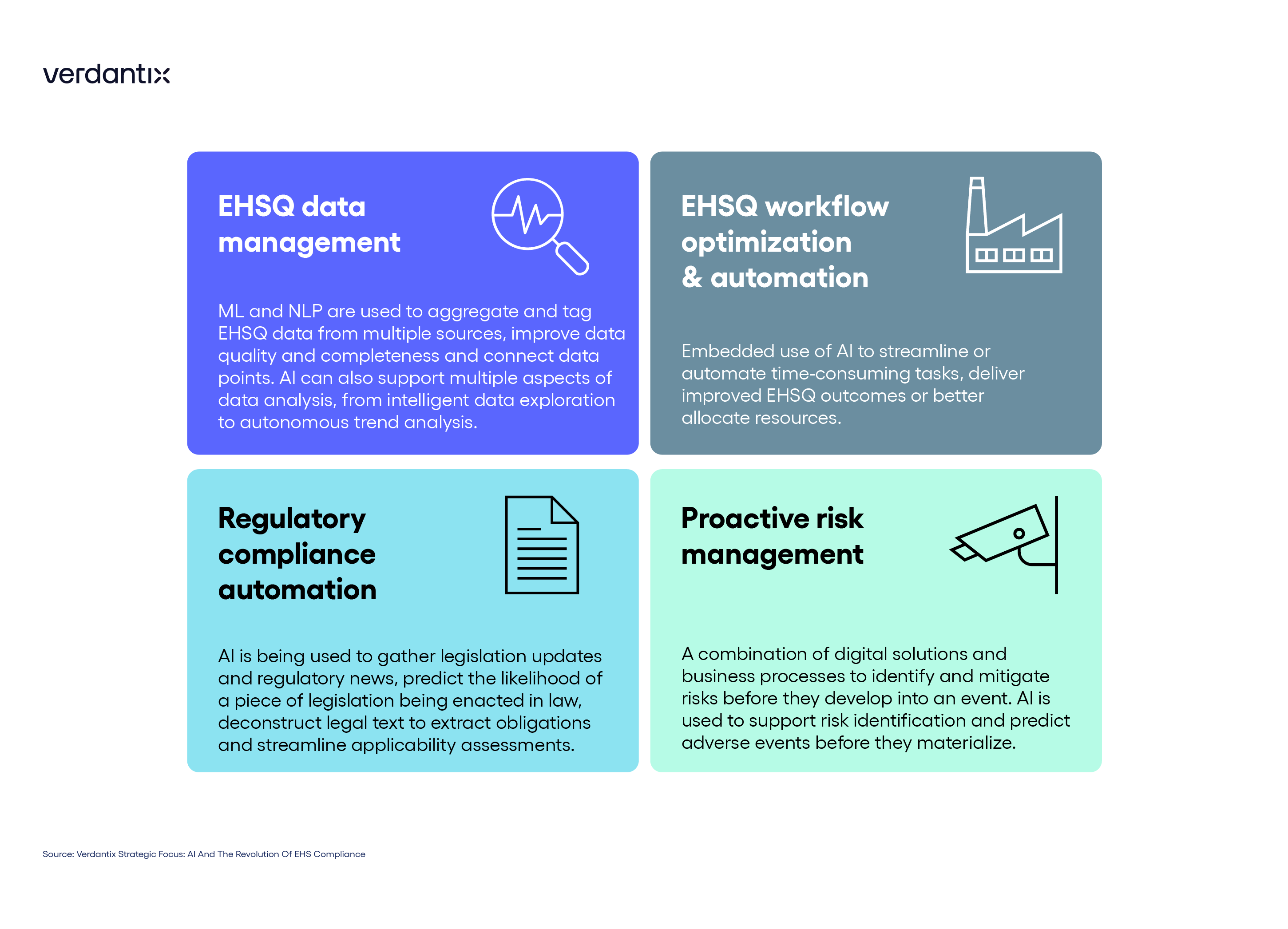AI In EHSQ: How Are Vendors Influencing The Market?

Rain Chiang
Verdantix has tracked the notable growth in sophistication and usage of AI solutions in EHSQ over the past two years. From predictive analytics to AI-powered chatbots, these advancements reshape how organizations approach environmental, health, safety and quality management.
There are many conflicting ideas about the definition of AI; broadly speaking, it's the ability to simulate human intelligence. Capabilities that fall into this category include understanding and interacting with an environment, possessing reasoning skills, learning from provided data and problem-solving. In comparison, traditional computing strictly operates on fixed instructions. Consequently, AI in EHSQ is adaptable to complex and dynamic data sets to support real-time decision-making, which was previously impractical in rule-based systems.

With regards to the general applications of AI in EHSQ, Verdantix has identified four high-level categories to help focus the evaluation of new technology. Firms should consider the applicability of AI solutions for:
- EHS data management.
Take Aberdeen-headquartered risk control and assurance software provider COMET, whose AI tool COMET Signals deploys machine learning on unstructured EHSQ data to map common fields and attributes to a consistent taxonomy, assisting in data aggregation.
- Workflow optimization and automation.
For example, Copenhagen-headquartered multi-service safety training provider RelyOn Nutec leverages AI to build learner-specific training content and plans based on their historical learning performance. This accelerates enrolment workflows, ensuring workers are assigned to necessary trainings.
- Regulatory compliance.
Consider market access and product compliance firm Compliance & Risk, whose Approval Probability score suggests the likelihood of regulatory approval on product compliance topics based on the historical behaviour of regulatory bodies and individual signatories in approving regulations on similar topics and products.
- Proactive risk management.
One example of this is VelocityEHS’s use of camera analytics on grip ergonomics for manufacturing environments, which can detect and recommend remediation actions and controls to mitigate the development of work-related musculoskeletal diseases.
There is still a substantial gap between the market’s desire to adopt AI for EHSQ and the planned deployment rate across organizations. The 2023 Verdantix EHS global corporate survey found that, on average, 22% of senior EHS decision-makers considered implementing various AI EHS use cases to be a high priority for their organization. Compared with our 2024 EHS and quality management surveys, we find that only 8% and 13% of firms plan to roll out AI widely across several use cases over the next two years. To bridge this gap, organizations should be aware of the risks associated with deployment and best practices around implementation.
To learn more about EHSQ use cases, survey data findings and implementation risks, tune in to our upcoming webinar How To Elevate Your EHSQ Approach With AI.
About The Author

Rain Chiang
Industry Analyst





